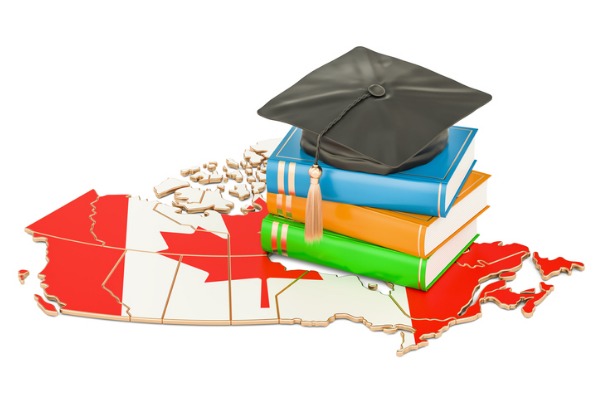Trade School
India
In India, vocational schools are mainly run by the government under the guidance of the Ministry of Skills Development and Entrepreneurship. The courses offered by the Government of India are Udaan, Polytechnic, Parvaaz, National Rural Livelihoods Mission, Industrial
Training Institutes, Aajeevika National Rural Livelihood Mission, Craftsman Training Program. The Skill India movement has raised the standards of all these institutions. In addition to these, the Central Board of Secondary Education (CBSE) has included many vocational subjects in its upper secondary education.
United State
In the United States, there is a big difference between a professional and a professional university. The term college degree is generally reserved for for-profit post-secondary institutions. By contrast, vocational schools are government-owned or at least government-backed institutions, occupy two full years of study, and their credits are generally accepted in other parts of the academic world and, in some cases, as charter academies or schools magnet can take the place of the last years of high school.
Professional universities, on the other hand, generally do not have government support in any capacity, occupy periods of study of less than a year, and their training and certifications are rarely recognized by the academic world at large. Furthermore, since most professional universities are private schools, this group can be subdivided into non-profit schools and private schools, operated for the sole economic benefit of their owners. As a result of this emphasis on the commercialization of education, a large number of professional universities retained a bad reputation for quality by over-promising the job prospects of their graduates in their field of study upon completion of their program, and by emphasize the number of careers a student could choose from.
Although the popularity of professional universities has skyrocketed in recent years, the number of government-sponsored vocational schools in the United States has decreased significantly .
The Association for Professional and Technical Education (ACTE) is the largest American national educational association dedicated to advancing professional and technical education or vocational education that prepares youth and adults for careers.
Previous vocational schools such as the California Institute of Technology and Carnegie Mellon University have become full degree-granting institutions.
Netherland
In the Middle Ages, children learned a vocation through learning. They were generally 10 years old when they entered service, and were first called apprehensive (apprentice), then gezel (officer), and after an exam, sometimes with a workmanship example called meesterproef (masterpiece), they He called them meester (master craftsman)) In 1795, all the guilds in the Netherlands were dissolved by Napoleon, and with them the guild's vocational education system. After the French occupation in the 1820s, the need for quality education led more and more cities to form day and night schools for various trades. In 1854, the Maatschappij tot verbetering van den werkenden stand (society to improve the working class) was founded in Amsterdam, which changed its name in 1861 to the Maatschappij voor de Werkende Stand (Society for the working class). This society started the first public vocational school (De Ambachtsschool) in Amsterdam, and many cities followed. Initially for boys only, then Huishoudens (cleaning) school was introduced as a vocational education for girls. Cleaning education began in 1888 with the Haagsche Kookschool in The Hague.
In 1968, the law called Mammoetwet changed all this, effectively dissolving the Ambachtsschool and the Huishoudschool. The name was changed to LTS (lagere technische school, lower technical school), where mainly boys went due to their technical nature, and the other option, where most girls went, was LBO (lager beroepsonderwijs, lower vocational education) . In 1992 both LTS and LBO switched to VBO (voorbereidend beroepsonderwijs, preparatory vocational education) and since 1999 VBO together with MAVO (middelbaar algemeen voortgezet onderwijs, intermediate general secondary education) switched to the current VMBO (voorbereidend middelbaar beroepsonderwijs education) intermediate preparatory, intermediate preparatory education.
Australia
Vocational schools were called "technical colleges" in Australia , and there were more than 20 specialized vocational training (VET) schools. Only four technical colleges remain, and are now known as "trade colleges". At these universities, students complete a modified year 12 certificate and begin an apprenticeship at the school in the trade of their choice. There are two trade colleges in Queensland; Brisbane, Gold Coast, Australian Industry Trade College and one at Adelaide, St. Patrick's Technical College, and one at Perth, Australian Trades College.
Canada
Vocational schools are sometimes called "colleges" in Canada. However, a university may also refer to an institution that offers part of a university degree or credits that can be transferred to a university.
In Ontario, high schools were divided into three streams: technical schools, business or commercial schools, and colleges (academic schools). While schools still exist, the curriculum has changed so that, no matter what type of school they attend, they can still attend any postsecondary institution and still study a variety of subjects and others (academic or practical). In Ontario, the Ministry of Training, Colleges and Universities divided postsecondary education into universities, community colleges, and private professional colleges.
In the province of Quebec, there are some vocational programs offered in institutions called CEGEP (College of General and Professional Studies) , but these can also function as an introduction to university. In general, students complete two years in a CEGEP directly from high school and then complete three years in a university (instead of the usual four) to earn a college degree. Alternatively, some CEGEPs offer vocational training, but vocational training is more likely to be found in institutions separate from academic institutions, although they may still be called colleges.





Post a Comment